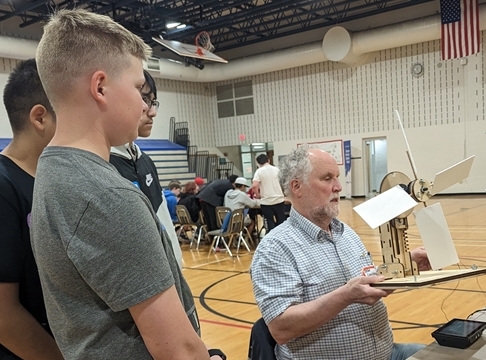Related News
Related News
-
Energy shortfall of 9 gigawatts projected for the Northwest
By 2030, a dry year combined with soaring energy demand during extended cold snaps could lead to rolling blackouts, a new study warns.
Find Out More -
Sustainability Snapshot - Celebrating Energy Efficiency Projects in the Community
Sustainability Snapshops highlight impactful projects completed by EWEB's Customer Solutions department, as a way to celebrate the meaningful work happening behind the scenes.
Find Out More -
McKenzie Valley electric service territory realignment study reaches key milestone
EWEB Commissioners approved a resolution authorizing the General Manager to negotiate and execute agreements with Lane Electric Cooperative regarding a potential realignment of electric service territory in the McKenzie Valley at the Board’s December meeting.
Find Out More -
EWEB secures $2.5 billion of reliable, affordable, carbon-free energy for customers
The new contract with EWEB’s largest energy supplier, the Bonneville Power Administration, forms the foundation of a diverse energy portfolio.
Find Out More -
Women in STEM: Meet the Hydro Project Engineer Building Habitat for Salmon
EWEB Engineer Associate Val Chang found her way to the McKenzie River from Los Angeles, inspired by heritage trips to the waters of Taiwan and key mentors along the way.
Find Out More -
Public Power Week Poster Contest Winners 2025
The results are in! View the winning posters from EWEB's 2025 Public Power Week Poster Contest.
Find Out More -
EWEB Hometown Heroes compete internationally
Out of 290 teams from 14 different countries, EWEB's Lineman Rodeo team places in the top third of competitors.
Find Out More -
EWEB's Halloween Truck-or-Treat is a huge success
Community members are accustomed to spotting EWEB trucks around Eugene streets and neighborhoods. But last week, those familiar vehicles looked a little different. At EWEB's second annual Truck-or-Treat Customer and Crew Appreciation Event, our fleet transformed into a festive Halloween spectacle.
Find Out More -
Let's Talk Turkey. Is your family ready for winter?
We're heading into the holidays, but that also means snow, ice, and not-so-nice weather might be in the forecast. Here are some tips to prepare in advance.
Find Out More -
Vote for your favorite Public Power Week Posters
The top five submittals will receive awards. Help us pick the winners.
Find Out More -
EWEB Hosts Annual Spill Drill to Protect McKenzie River
EWEB led emergency responders in its annual “spill drill” on the McKenzie River on Wednesday, Oct. 15, at the Trail Bridge Campground.
Find Out More -
Electric Projects underway in North & South Eugene
Underground lines and disaster-resilient power poles are part of EWEB’s infrastructure upgrade near Eugene’s largest natural resource area.
Find Out More -
EWEB general manager to retire in 2026
EWEB launches nationwide search for next leader to continue the progress of the last decade and ensure a smooth transition.
Find Out More -
The Bonneville Power Administration Rate Change and Your EWEB Bill
BPA’s finalized rate increase is smaller than projected, and EWEB’s pass-through adjustment effective October 1, 2025 will now be 2.7% for residential customers—down from the anticipated 4%.
Find Out More -
Quartz Creek: Setting the Stage for Floodplain Restoration
The project resets the floodplain along 1.8 miles of a formerly channelized creek to improve water quality, fish habitat and natural disaster resiliency.
Find Out More - Show More
Bethel middle schoolers compete in a wind power challenge
May 02, 2023 • Rachael McDonald, EWEB Communications

Seventh graders in the Bethel School District put their handmade wind turbines to the test in a wind power challenge supported by EWEB grants last week .
Teacher Cathy Bechen coordinates the EWEB grant program for Bethel School District. She said this competition culminates the energy unit for middle schools in the district. She said learning how to build a wind turbine is just one aspect of the project.
“First of all, learning about renewable energy is really important in these kids’ lifetimes. They’re really going to need to do a lot of thinking about them, so this is a good start,” Bechen said. “It helps them to learn to work together, and be creative, and a lot of them have never done things like this. So, they’re learning new skills and being successful. And it’s fun to see the kids come to this and look forward to it.”
For the final test, the two top teams from each seventh-grade classroom in the district brought their turbines to the gym at the Meadow View School in the Bethel neighborhood. The teams, who consisted of two to three students each and had fun names like TeamMoka and Twinkies. They were each interviewed about how they worked together on the project. EWEB commissioner Sonya Carlson and staff members Aaron Orlowski and Marciana Rosales volunteered to assist with the event.
Before teams tested their turbines to see how much energy they generate They could do a trial run to work out any kinks. The turbines look somewhat like you’d imagine, blades connected to a hub. For the test, performed by Dean Livelybrooks, physics professor at the University of Oregon, the turbines are attached to a stand and wires go into a mechanism that measures power over time.
“So we run it with the fan, we drive it with the fan,” he said.
The fan’s wind moves the blades.
“We run it for 60 seconds. We basically integrate, or sum up, the power over time and they produce a certain amount of energy at the end and that’s their score from this station,” said Livelybrook. “That’s their energy score, essentially.”
“Okay, so here we go,” said Livelybrook as he set the wind turbine in front of the fan. “We’re centered. Life is good. Let’s go ahead and fire that up.”
He tested each of the teams’ turbines. Design aspects like blade pitch and number of blades can affect the energy the turbines produce. Livelybrook said he’s helped with this competition for the last 15 years.
“My experience is that middle school students really respond to this, and I think this sort of activity targeted at that level, middle school level, helps keep students’ interest in science and engineering as they go through,” Livelybrook said.
The first-place prize went to a team named the Twinkies from Meadow View School, second place went to the Nothings from Meadow View, and there was a tie for third place: The Rats from Prairie Mountain, and the Boiz from Shasta.
EWEB customers help support the wind energy unit at Bethel and other science education programs through grant funding. EWEB education grants total $500,000 annually for Eugene, Bethel, Springfield, and McKenzie School Districts.



